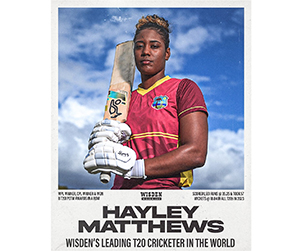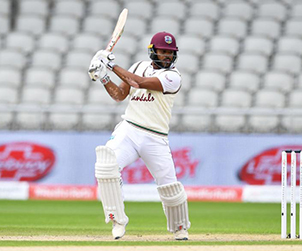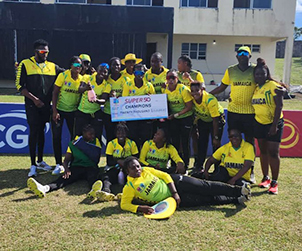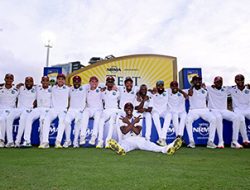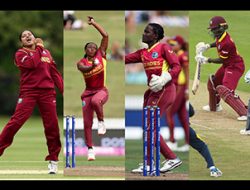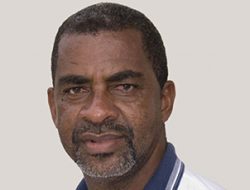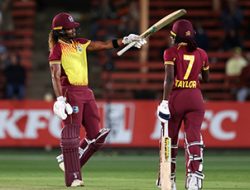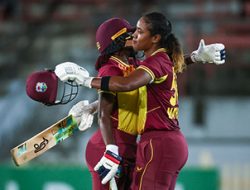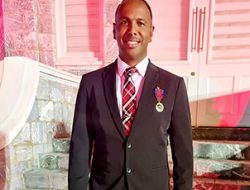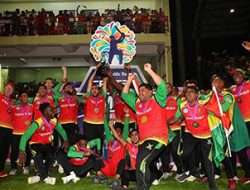It is a puzzle that has gone unsolved for a couple of decades. Attempts to crack it involve mainly, but not only, the quality of pitches.
At their meeting in Barbados last weekend, WICB directors charged the cricket committee to have another go at coming up with suggestions of how “to prioritise the development of fast bowlers in the region and for the West Indies team, recognising that the majority of the overs in regional tournaments are bowled by spinners and is impacting negatively on the production of fast bowlers for the West Indies team”.
As it considers its fresh mandate, the committee – on which Courtney Walsh and Joel Garner are the only members from the glorious past of fast bowling dominance – is presumably familiar with what prompted the directors’ renewed concern. Comparisons with the ’70s and ’80s, when Garner and Walsh were just two among many pre-eminent fast bowlers who devastated West Indies’ opponents everywhere, are clearly unwarranted. No team in history possessed such a proliferation, none is ever likely to do so again.
The record since Walsh, the last in that revered lineage, retired in 2001 is enlightening. Of the top 10 wicket-takers in the inaugural Professional Cricket League (PCL) last season, seven were spinners. The count was eight of 10 in the three previous years and all but one of 10 in 2011. In that time, it hasn’t been unusual for a spinner to be handed the new ball.
It has become a familiar scenario, diminishing the stocks of what, from the earliest days, was an essential element in West Indies’ strength. Learie Constantine, George Francis, Herman Griffith, George John and Manny Martindale were the pre-war pioneers. Wes Hall and Charlie Griffith followed, before the numerically formidable attack, initially assembled by Clive Lloyd, arrived to underpin 15 years of impregnability.
Since Walsh decided that, at 37, after 132 Tests and a record 519 wickets, his body was no longer fit enough for the game at the highest level, West Indies Test teams have included 18 new fast bowlers. Only three have taken more than 100 wickets – Fidel Edwards (165), Jerome Taylor (122) and Kemar Roach (120). Only Roach, at 27.83, and Jermaine Lawson, at 29.64, have averaged less than 30 runs a wicket. Such names as Dwight Washington and Brandon Bess have been long since forgotten by all but diligent statisticians identifying one-Test wonders.
Nor have the spinners dominating the regional game since capably filled the breach. The left-arm skyscraper Sulieman Benn heads the list with 87 wickets from 26 Tests; Shane Shillingford (70 from 16 Tests) and Devendra Bishoo (50 from 13) are the only others with more than 25 wickets or 10 Tests. None averages less than 30 runs a wicket, three are over 50. Such statistics go a long way to accounting for West Indies’ rapid drop from top of the world to near the base. No wonder the WICB continues to be worried.
The views of Michael Holding and Andy Roberts, two of the commanders in Lloyd’s army of fast men; Ian Bishop, an outstanding successor; and Wes Hall, the spearhead of an earlier generation, are enlightening.
Holding, now a widely admired media analyst, fittingly points out that young men with all the physical attributes for bowling fast are turned off by the slow, low pitches presently found on most grounds in the Caribbean. “Not all the surfaces we had to bowl on coming through regional cricket were pacy and bouncy, but most gave you a chance,” he recalls. “No longer. I can imagine the reaction of an ambitious young quickie today when he sees his captain call on an offspinner to open the bowling. I know what mine would have been.”
He mentions other considerations. “Spinners are given a false sense of their worth and batsmen are restricted in their strokeplay on such pitches,” Holding adds. “The long and short of it is that every sport needs the best conditions to flourish.”
Citing India as an example, he maintains that it is not beyond West Indies to turn their crisis around. “When I first played against India in the Caribbean in 1976, their spinners, Bedi, Chandra, Venkat and Prasanna, bowled all but a few overs between them,” he recalls. “Madan Lal, Mohinder Amarnath and Ekie Solkar were medium-pacers, just there to take the shine off the ball.”
Holding observed that the Indian board eventually realised that such an imbalance placed the team at an obvious disadvantage overseas; it deliberately set about upgrading pitches. At the same time, the MRF Pace Foundation was formed under the guidance of the great Australian Dennis Lillee.
The transformation has been gradual; it was most evident in the use of five fast bowlers for their tours of England and Australia last year – Varun Aaron, Bhuvneshwar Kumar, Mohammed Shami, Ishant Sharma and Pankaj Singh for the former, Umesh Yadav in place of Pankaj for the latter.
Bishop, like Holding currently one of cricket’s most astute commentators, accepts that improved pitches are “central to the encouragement of quick bowlers”. He adds a few important caveats. “We also have to think about encouraging and deliberately identifying new talent from the lower levels,” he says. “Let us place better cricket surfaces, where possible, at the centre of club and youth cricket, then all the way up the chain to the first-class game.”
He would invest in “one or two fast-bowling-specific coaches in each territory… to be placed at age-group level to carefully encourage, scout nationally, and develop by means of technical help/mentorship those identified and bring them through the system… This is necessary so that the prospective bowlers are technically sound by the time they arrive at first-class level.”
He refers to his own experience to enhance the point. “I remember growing up that I wasn’t necessarily encouraged to bowl fast exclusively because of pitches but by the right encouraging word of advice and interaction with already senior fast bowlers, such as Ruskin Mark, Tony Gray, Andy Roberts, Patrick Patterson and Mike Holding during different stages of development,” he recalls. “But this was already at an advanced age for me of 16, 17, 18, 19.”
Roberts, the original leader of the pack and a former West Indies team coach who remains close to the game, speaks of the negative attitude of contemporary fast bowlers themselves. “The majority of the fast bowlers in the Caribbean are afraid of the hard work that’s ahead of them,” was his hard-hitting assessment in a recent ESPNcricinfo interview. “Nothing comes easy in life. Fast bowling is like the marathon. You have to be prepared to put in the hard work. That’s what makes someone a top-quality fast bowler.
“You need to do a lot of running because that’s what you do on a cricket field – running. You need to strengthen your core, which is a lot of hard work. I think the majority of our fast bowlers spend more time in the gym than they do [running] on the field, on the beaches, in the hills, trying to strengthen their legs and their whole core. There is a lot of laziness.”
Hall recalled his fitness methods during a Test career that lasted 10 years. After he was dropped after his first tour, to England in 1957, he described what he went through to reclaim it. “It took me one whole year, bowling in nets [at club grounds] Queen’s Park and Dover, bowling at one stump, working on my stamina, running 10 miles a day,” he said. “If you run five miles in the morning and five in the evening, then you start doing sprints, your stamina gets right for match day,” he said. “It’s the same way you train a race horse”.
Hall was back a year and a half later, for the tour of India and Pakistan, within a year developing into a thoroughbred fast bowler who gathered 192 wickets in 48 Tests.
The search for a few new thoroughbreds has already been long and futile. It is not a reason to stop trying.

